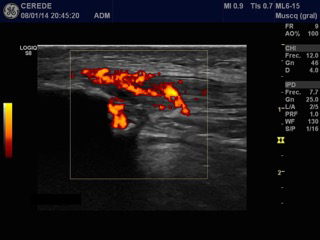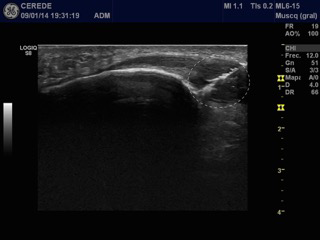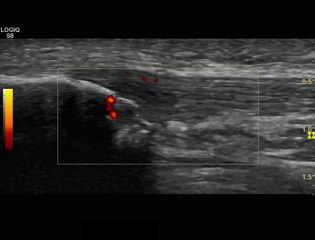eISSN: 2471-0016


Clinical Images Volume 4 Issue 1
1Department of Invasive Physiotherapy in Sports Injuries. Universitat de Lleida, Spain
1Department of Invasive Physiotherapy in Sports Injuries. Universitat de Lleida, Spain
Correspondence: Dr. Jose Manuel Sánchez-Ibáñez, CEREDE Barcelona Clinic, Spain
Received: January 01, 1971 | Published: January 5, 2017
Citation: Sanchez-Ibanez JM. The ultrasound-guided intratissue percutaneous electrolysis (epi®) for the treatment of refractory-neovascular patellar tendinopathy. Int Clin Pathol J. 2017;4(1):1–2. DOI: 10.15406/icpjl.2017.04.00080
Refractory patellar tendinopathy (RPT) is a chronic disease with progressive degeneration of extracellular matrix, microtearing, and loss of tendon micro architecture as a hallmark. The essential pathologic lesion of tendinopathy is often described as a failed healing response of the tendon, and persistence of the lesion is attributed to the tissue anchored in the proliferative or angiogenic phase, as shown in histopathology.1
Structural findings of collagen degeneration and angiofibroblastic neoplasia have been well described and are now referred to as "neovascular tendinosis." The presence of neovascularization has been theorized to cause pain in patients with tendinopathy.2 Recent studies have examined the role of neo-vessels and neo-innervations on chronic tendon pain and dysfunction, and interventions targeting this process have reported favorable outcomes in RPT (Figure 1-4).3



Ultrasound-guided Intratissue percutaneous electrolysis (EPI®) treatment is the application of a direct current (DC) whose catodic flow is transferred to the area of the degenerative tendon using an acupuncture needle.4 This accumulated electrical charge (AEC) in the degenerative tissue will produce the activation of the molecular, cellular and biological processes necessary to restore the regeneration mechanisms of the tendon. In recent studies it has been demonstrated that EPI® technique is effective in tendinopathy and sport muscular injuries.5–7
None.
The author declares no conflict of interest.

©2017 Sanchez-Ibanez. This is an open access article distributed under the terms of the, which permits unrestricted use, distribution, and build upon your work non-commercially.